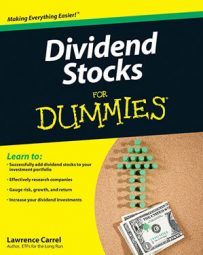Don’t confuse growth with share price appreciation. Growth is a measure of a company’s earnings and revenue increases relative to similar companies. Share price merely reflects what investors are willing to pay for the stock, which may have nothing to do with the company’s actual performance.
Seeking potential in the young and small
Small things tend to grow at a faster rate than big things. Plant a pea, and after it germinates, it can double or triple its size in a single day. Likewise, companies with the most growth potential are generally the smallest and youngest — companies that have been around less than 15 years and post profits in the millions as opposed to the billions. If Company A earned $1 million last year, it may quite easily double its business and post a profit of $2 million this year. However, if Company B earned $1 billion last year, it has to come up with 1,000 times more money than Company A does to post the same growth rate.
Profiting from share price appreciation
Growth stocks are typically in newer industries that provide products few people have but everybody wants. If you sell something that more people want to buy this year than did last year, you should see your sales rise significantly. And if you run your company well, this sales increase should lead to a sharp rise in earnings. When a company starts to make more money, investors see the potential to make more money for themselves, so they start increasing the demand for the company’s shares. Greater demand for the stock sends the price rising, which is how growth stocks see big jumps in share price.
Focusing on growth
Growth stocks get their moniker if their earnings and revenues grow at a faster pace than their particular end of the market. Because the focus is on growth, certain measures, including a company’s price-to-earnings ratio or price-to-sales ratio carry less weight. Growth investors are more concerned with how the company did this quarter compared with how it performed in the quarter 12 months earlier.
Growth investors generally evaluate growth stocks based on the following criteria:
Earnings and revenue growth rates higher than the broader market and other companies in the same industry: Growth rates should be at least 10 percent. If the earnings growth rate is faster than the revenue growth rate, the company is also keeping costs down.
Consistent growth rate for several consecutive years: A one-year jump is a fluke. Five years of consistent growth is a trend.

